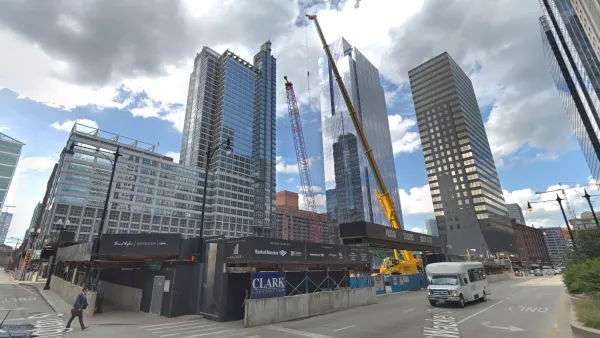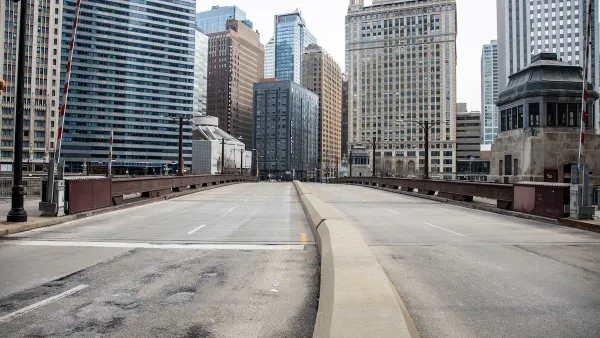Whet Moser looks at the revival of the intercity bus industry, despite its past inadequacies and stigmas. He discusses a new report that details the elements contributing to today's bus boom.
In this article, Moser first reminisces about his own past experiences, often negative, with intercity bus travel, before pointing to some surprising new findings regarding the turnaround in the industry. He presents the findings from a new report ‘The Motor Coach Metamorphosis" [PDF] published by DePaul’s Chaddick Institute for Metropolitan Development, that charts the decline and growth of intercity bus services. According to the report, "[i]ntercity bus service grew by 7.5% between the end of 2011 and 2012 -- the highest rate of growth in four years," outpacing growth in rail, airline and automobile intercity travel modes.
Moser cites two important phenomena contributing to this trend: 1) the opening of new bus services starting in 2006, including MegaBus and BoltBus, offering cheap fares and technological perks such as WiFi, which added much-needed competition to the otherwise stagnant bus industry; and 2) the revival of central-business districts throughout America's cities, which appeal to young travelers looking to avoid the hassle of travel to and from airports. The report also talks about how the incorporation of new technologies, streamlined location of new bus stops, and federal crackdowns on unsafe "Chinatown" buses are all contributing to growth in this industry.
Moser notes that nearly 50% of intercity bus users are within the ages of 18 and 25, that 5 out of six are traveling for fun or personal reasons, and that the majority are women. Finally, he speculates that another possible contributing factor to this trend is the abundance of time that many younger travelers may have prior to entering the workforce, before the "money-for-vacation-days trade" makes long bus journeys less attractive.
FULL STORY: Megabus, the Recovery of American Downtowns, and the Resurgence of the Bus Industry

National Parks Layoffs Will Cause Communities to Lose Billions
Thousands of essential park workers were laid off this week, just before the busy spring break season.

Retro-silient?: America’s First “Eco-burb,” The Woodlands Turns 50
A master-planned community north of Houston offers lessons on green infrastructure and resilient design, but falls short of its founder’s lofty affordability and walkability goals.

Delivering for America Plan Will Downgrade Mail Service in at Least 49.5 Percent of Zip Codes
Republican and Democrat lawmakers criticize the plan for its disproportionate negative impact on rural communities.

Test News Post 1
This is a summary

Test News Headline 46
Test for the image on the front page.

Balancing Bombs and Butterflies: How the National Guard Protects a Rare Species
The National Guard at Fort Indiantown Gap uses GIS technology and land management strategies to balance military training with conservation efforts, ensuring the survival of the rare eastern regal fritillary butterfly.
Urban Design for Planners 1: Software Tools
This six-course series explores essential urban design concepts using open source software and equips planners with the tools they need to participate fully in the urban design process.
Planning for Universal Design
Learn the tools for implementing Universal Design in planning regulations.
EMC Planning Group, Inc.
Planetizen
Planetizen
Mpact (formerly Rail~Volution)
Great Falls Development Authority, Inc.
HUDs Office of Policy Development and Research
NYU Wagner Graduate School of Public Service




























